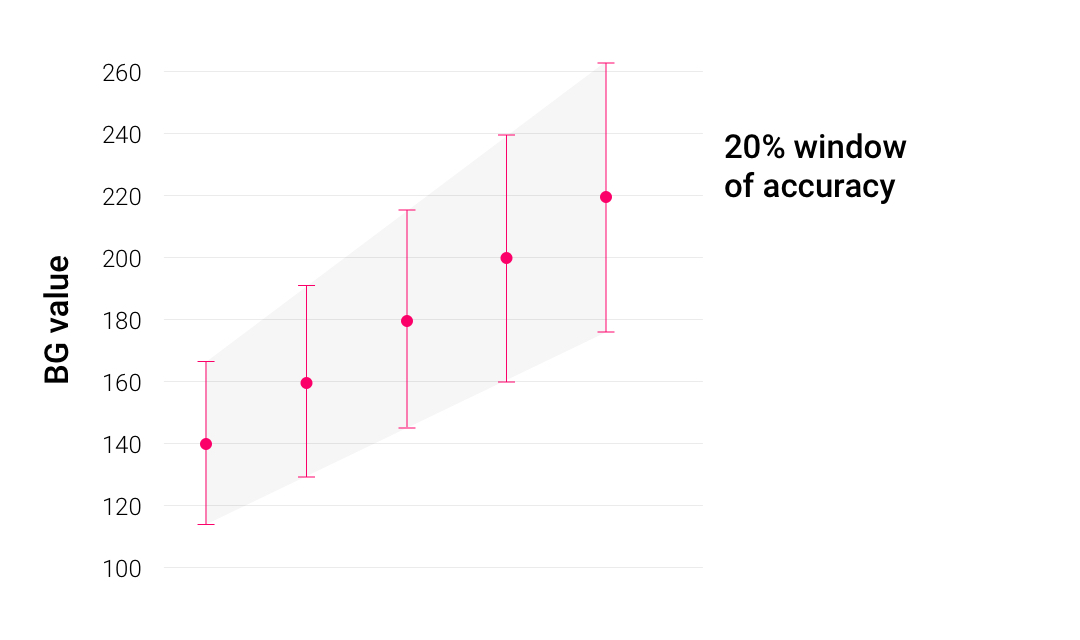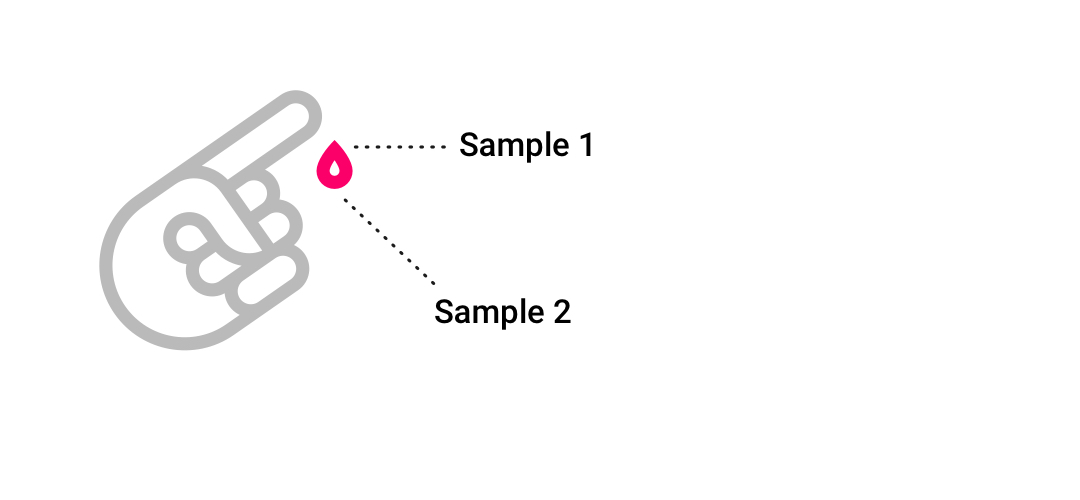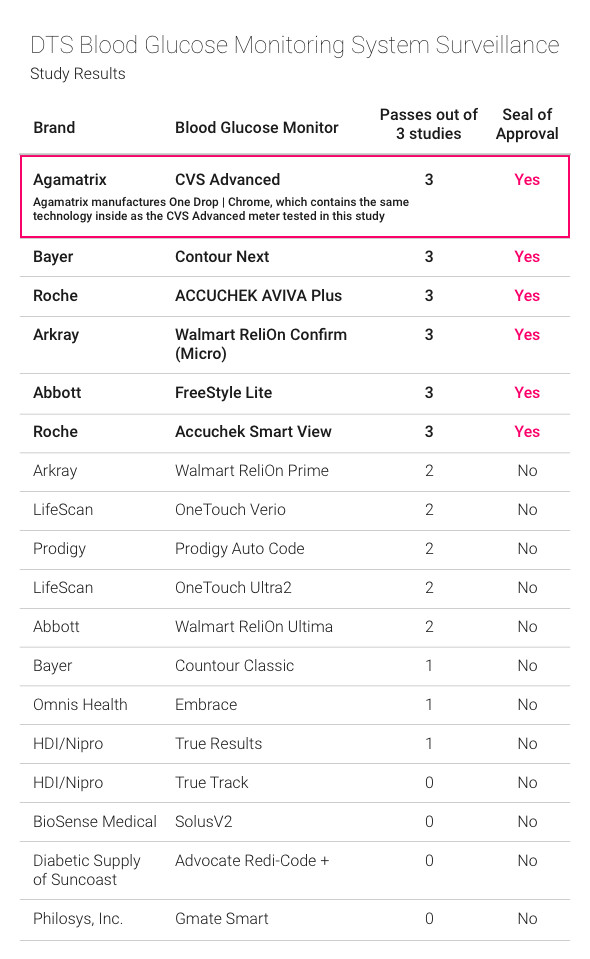Every blood glucose meter claims that it's accurate. But what does accurate really mean in terms of blood glucose (BG)?
Pop Quiz
A. Does accurate mean that your blood glucose meter will show you the true BG?
B. Does accurate mean that your blood glucose meter will show the same BG each time if you test multiple times from the same finger stick?
C. Does accurate mean that your blood glucose meter will show the same BG as a different blood glucose meter if you test from the same finger stick?
D. Is it none of the above?
Yep! D: None of the above ;) What?!
Meter Accuracy Reality
No at-home blood glucose meter will show a true BG — only a lab test can do that. (And actually, to be very technically correct, there is theoretically a true BG value, but it's impossible to measure — that's where statistics come in!)
We can only estimate what the true BG value is by taking a sample. In order to be considered “accurate” and thus approved for use in at-home testing scenarios, the FDA requires that blood glucose meters provide:
- 99% of blood glucose measurements within 20% of lab results
- 95% of blood glucose measurements within 15% of lab results
This literally translates to:
if your true BG value (measured in a lab test) was 100 mg/dL, your blood glucose meter could show as low as 80 mg/dL or as high as 120 mg/dL, and the FDA would consider either number accurate because both 80 mg/dL and 120 mg/dL are results that fall within that 20% range of lab results.
 This is called variance (or the amount of measurement error that the FDA allows in order to consider the reading “accurate”) and the variance gets larger as your true BG gets larger.
This is called variance (or the amount of measurement error that the FDA allows in order to consider the reading “accurate”) and the variance gets larger as your true BG gets larger.
For example, if your true BG value (again, measured in a lab) was 400 mg/dL, your blood glucose meter could show as low as 320 mg/dL or as high as 480 mg/dL.
Even with that 160-point spread, the FDA would still consider either number (and all numbers in between) “accurate” because the number is within 20% of lab results. 
Sampling: The Food Dye Test
You might get different BG readings even from the same drop of blood because of a concept called sampling.
Imagine that you have a glass of water and you drop some blue food coloring into the glass. In this example, the glass of water is your blood; the food coloring is the sugar in your blood.
Different samples from that same glass might look more blue or less blue, depending on the way the food coloring is mixed with the water.  This is what happens when you measure your blood glucose.
This is what happens when you measure your blood glucose.
The sugar mixes into the blood. You might test a blood drop with your meter that has more glucose. You might test a blood drop that contains less glucose.
Both will be reflected in your two different BG checks, and both will be accurate.
Sampling: Blood Flow
Here's another way to think about it. Just like the H20 and food-coloring combo swirling around, churning different shades of blue, your bloodstream is constantly moving, churning different 'shades' of blood glucose.
As your blood flows, so do all the glucose molecules inside of it. Depending on which blood glucose sample you take, you'll end up with a different sample with a different concentration of glucose.
What About Comparing Meters?
We've written about variation across blood glucose meters before, and it's definitely hard not to compare between two blood glucose meters and decide that the meter that gives you the “better” reading (the reading you want to see) is the more accurate one.
But actually, each blood glucose meter uses different technology to produce a blood glucose reading, so you can't really compare meters.
You can only compare a blood glucose reading to the true value, which you'll never know!
Every meter uses its proprietary technology to measure blood sugar and, therefore, has a specific measuring bias. It's those biases that get us into trouble when we compare blood glucose across different meters.
RELATED CONTENT
Blood Glucose Meter Accuracy: Testing the Top 10 Best Blood Glucose Meters
So what's a person with diabetes to do?
Lab standard check
Check your blood sugar when you’re getting blood drawn venously.
You can figure out the particular bias of your meter by comparing it to the most accurate blood sugar reading: a venous plasma reading measured in a laboratory setting.
This lab result is not to be confused with the blood sugar test done on another standard, at-home blood glucose testing device; that's the same type of testing as your meter!
Rather, use the same blood that's being used for your lab tests to simultaneously check blood sugar. Then, compare results.
DTS seal of approval
Additionally, make sure that you're relying on a blood glucose meter from a manufacturer that makes meters that have earned the Diabetes Technology Society (DTS)'s stamp of approval.
The DTS recently released a study that evaluated the accuracy of almost every commercially available blood glucose meter. Only 6 meters got the DTS stamp of approval.
The same technology in the Agamatrix meter that earned a stamp of approval from DTS is in your One Drop | Chrome (manufactured by Agamatrix). :)
So you should feel confident using your One Drop diabetes meter like a #diabadass.
Learn how One Drop can help you achieve Complete Health or click to shop our Complete Diabetes Management products.




